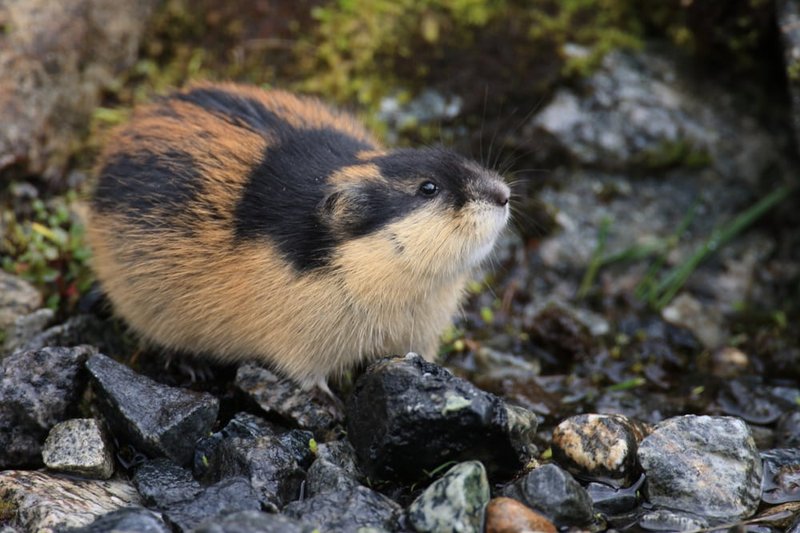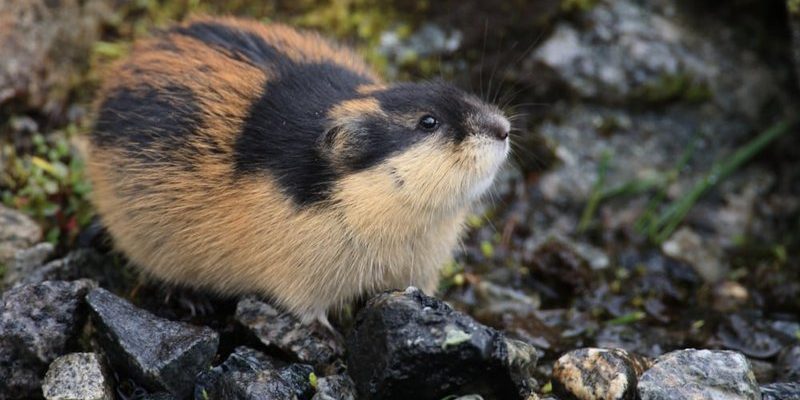
Lemmings are small rodents, found primarily in the Arctic and sub-Arctic regions. They have a crucial role in their ecosystem, acting as both prey and plant consumers. If you’d like to know more about these pint-sized adventurers and why they capture our imaginations, sit back and enjoy as we explore ten captivating facts about lemmings.
Lemmings Are Remarkably Adapted for Cold Climates
First off, let’s talk about their habitat. Lemmings make their home in some of the harshest environments on Earth. With thick fur, they’re well-equipped to handle the freezing temperatures of the Arctic tundra. Imagine wearing a cozy winter coat that never gets too stuffy; that’s kind of what a lemming’s fur does for them.
Their bodies also prepare for the cold by storing fat, which helps them survive when food is scarce. They’ve adapted to find food like grasses, mosses, and even some small roots, even when the ground is solidly frozen. Honestly, it’s kind of amazing how these little creatures make the most of their challenging environment!
The Myth of Mass Suicide
You might have heard that lemmings have a habit of jumping off cliffs in large numbers. Let me explain where this myth comes from. It all started back in 1958 when a documentary showed a large group of lemmings tumbling into the ocean. However, this wasn’t a natural behavior. The filmmakers staged the event to create drama, and the truth became twisted over the years.
In reality, lemmings do experience population booms and busts. When their numbers swell, they might overpopulate an area and migrate in search of food or better living conditions. But rest assured, they’re not planning any mass exits. It’s more about survival than self-destruction.
Lemmings Have Unique Social Structures
While lemmings might look like they’re just hopping around with their buddies, they actually have interesting social structures. They often live in small family groups. The young ones, called pups, depend on their mothers for a while, learning how to forage and stay safe.
Here’s the thing: lemmings can be quite territorial. Male lemmings, for example, will defend their space from others, especially during mating season. You might think of them as tiny furry warriors, staking out their claims in the tundra. It’s all part of their survival strategy, ensuring they have enough resources to thrive.
There Are Different Types of Lemmings
Did you know there are several species of lemmings? The most well-known are the Norway lemming and the collared lemming. Each type has specific adaptations that help them survive in their particular environments.
The Norway lemming, for instance, is known for its fluctuating populations. Sometimes, they breed so quickly that their numbers can explode, leading to those massive migrations we hear about. On the other hand, collared lemmings prefer the rocky terrains and are often found at higher elevations. The uniqueness of each species showcases their adaptability and resilience.
Lemmings Are Amazing Swimmers
You might not expect a tiny, furry rodent to be a great swimmer, but lemmings are surprisingly good at it! When their habitats become crowded or food runs low, these little guys have no problem taking a dip to find new territory. It’s like they’re going for a swim to their next adventure!
Their small and streamlined bodies help them glide through the water efficiently. They can even swim across wide rivers and lakes, making it easier for them to explore new areas and avoid potential dangers. This ability to swim not only enhances their survival chances but also opens up new feeding grounds.
Lemmings Have an Interesting Reproductive Cycle
Lemming reproduction is quite fascinating. These critters can breed almost year-round, producing several litters each season. When conditions are right, a female can give birth to as many as 10 pups in one go. It’s a busy life, but that’s nature’s way of ensuring their population can thrive!
Here’s the catch: their young grow up quickly. Within a few weeks, the pups are weaned and starting to explore on their own. Fast growth helps ensure that enough lemmings survive to maturity, despite the many predators—like foxes and birds of prey—that are always on the hunt.
Lemmings Play a Vital Role in Their Ecosystem
Despite their small size, lemmings have a big impact on the environment. They act as important prey for many animals, contributing to the food web. When lemming populations are thriving, you’ll notice a ripple effect—predators like owls and arctic foxes see a boost in their numbers too.
Additionally, lemmings help maintain plant life in their habitats. By nibbling on various plants, they promote growth and regeneration. This process helps maintain the balance of their ecosystem, keeping everything in check. It’s a classic example of how even the smallest creatures can have a large impact on their surroundings.
They Have a Short Life Span but a Quick Turnaround
Lemmings typically live for only about 1 to 2 years, which is quite short compared to many other mammals. But don’t let that number fool you; their lifespan is part of their survival strategy. By reproducing rapidly, lemmings ensure that enough offspring are around to take their place in the ecosystem.
This short life span also means lemmings must grow up and adapt quickly. The young need to learn the ropes fast, and that’s why they reach maturity at such a young age. It’s a fast-paced life, but it works well for these snow-hardy rodents.
They Can Be Found in Various Parts of the World
While you might associate lemmings mainly with the Arctic, they actually inhabit other cold regions as well. For instance, species can be found in parts of Canada, Scandinavia, and even Greenland.
These hardy little animals have adapted to different environments, showcasing their resilience. Whether it’s among the tundra’s icy expanses or the mossy knolls of a sub-Arctic region, lemmings find ways to thrive.
Final Thoughts on Lemmings
Lemmings are more than just the subjects of myths and legends. These small rodents are complex creatures with unique adaptations that help them navigate their harsh environments. From their surprising swimming abilities to their role in the ecosystem, lemmings truly hold a special place in the animal kingdom.
So, the next time someone brings up lemmings, you can impress them with your newfound knowledge! Whether it’s their fascinating social structures or their rapid reproduction rates, there’s so much more to these little guys than meets the eye. It’s a reminder that even the smallest creatures contribute to the grand tapestry of life on our planet.

